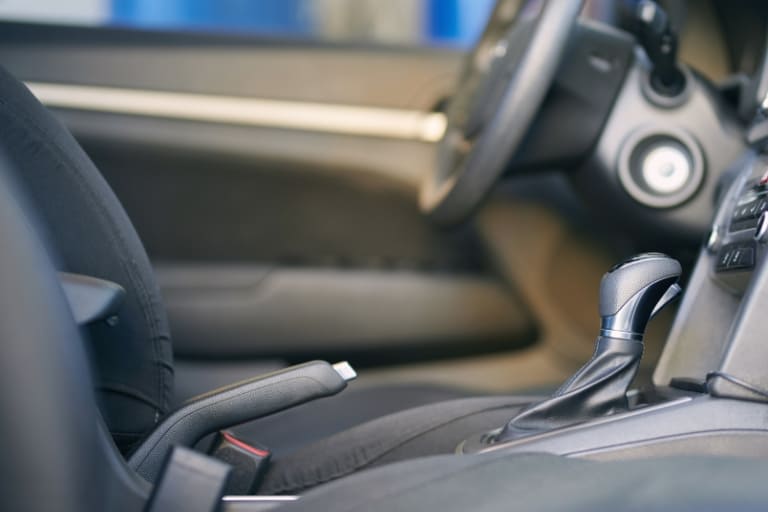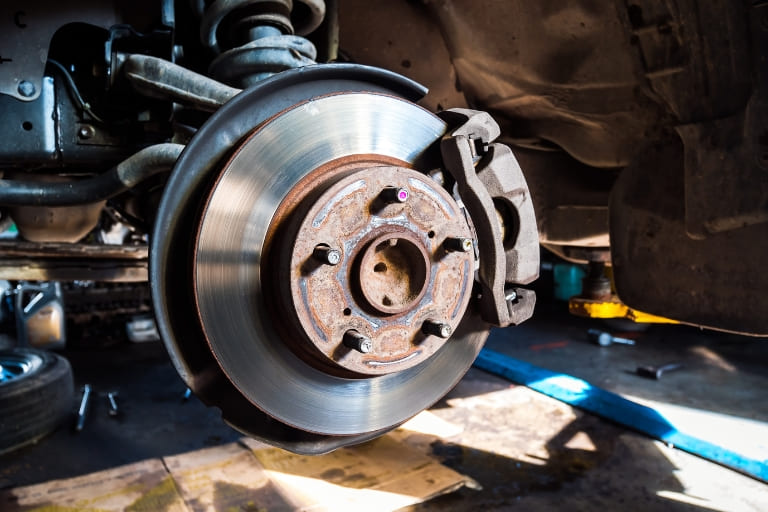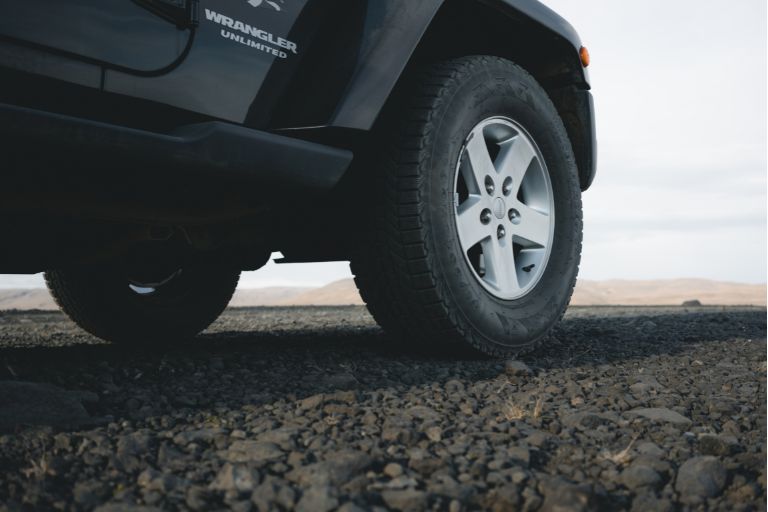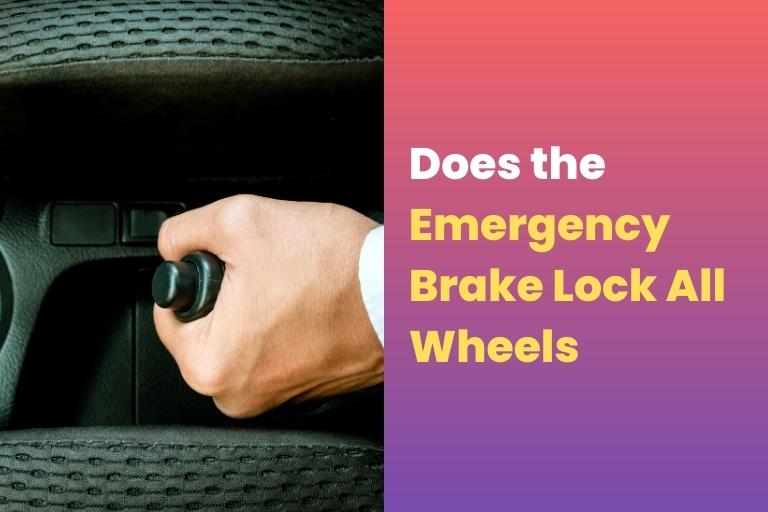The handbrake, often known as the parking brake e-brake, or emergency brake, is a supplemental stopping device in automobiles that the driver must manually trigger. It functions independently of the standard hydraulic braking system and is either in the center console or the car’s floor. Its primary function is to keep the car still while parked, to prevent rolling on inclines, and to give an extra layer of protection in an emergency.
In this post, we’ll look at how emergency brakes work, including whether they lock all wheels and how that affects vehicle stability. Let’s look at the complexity of emergency brakes and how they affect vehicle safety!
Contents
- 1 Does the handbrake (Parking Brakes) Lock All Wheels?
- 2 How the Handbrake or Parking Brake Works
- 3 Handbrake and Wheel Locking
- 4 Factors that Affect Wheel Locking
- 5 Safety Considerations and Best Practices When Using Handbrake
- 6 What Happens If You Don’t Use Handbrake Properly?
- 7 Frequently Asked Questions
- 7.1 What wheels does the handbrake work on?
- 7.2 Does the parking brake lock all wheels?
- 7.3 Does the handbrake lock the front wheels?
- 7.4 Does the parking brake lock the front wheels?
- 7.5 Does the handbrake lock the rear wheels?
- 7.6 Do emergency brakes lock the front or back?
- 7.7 Can my car move with an emergency brake?
- 7.8 What wheels are connected to the Ebrake?
- 7.9 which wheels does the handbrake lock?
- 8 Conclusion
Does the handbrake (Parking Brakes) Lock All Wheels?
No, the handbrake does not lock all wheels. In most vehicles, the handbrake only operates on the rear wheels. This is because the rear wheels have less traction than the front wheels, making them more likely to skid if the handbrake is applied to all four wheels.
How the Handbrake or Parking Brake Works

The e-brake, also known as the “parking brake” or “handbrake,” is a supplementary stopping mechanism in a vehicle used to support the car when it is parked or in an emergency.
Unlike the conventional hydraulic braking system, the handbrake functions via a cable system that locks the vehicle’s back brakes. When the emergency brake is applied, the cable tightens, causing the brake pads or shoes to press against the rotor or drum, producing friction and immobilizing the wheels. This helps to keep the car in place while parked on a hill, prevents rolling on inclines, and adds an extra layer of protection in an emergency.
Handbrake and Wheel Locking
If the handbrake is used quickly and with considerable force in older vehicles that do not have an Anti-lock Braking System (ABS), it can cause wheel locking. This can cause the wheels to lock up, causing the car to lose traction and potentially lose control. Drivers may need to physically press the brake pedal during emergency braking to retain control and avoid sliding, especially in older vehicles without ABS.
The criteria that decide whether the emergency brake locks all wheels or just a few vary based on the braking system’s design and setup.
The main deciding element in whether the parking brake locks all wheels or only a few is if the car has an anti-lock braking system (ABS). ABS is intended to avoid wheel locking during braking by dispersing braking forces among the wheels by their traction on the road surface. This aids in maintaining control and stability when stopping in an emergency or on slick conditions such as ice highways.
The emergency brake in ABS-equipped automobiles is designed to act in tandem with the ABS. When you use the emergency brake, the ABS may engage and regulate the braking power to keep the wheels from locking. This prevents all or some wheels from locking up, allowing for controlled braking and preventing skidding.
However, in older automobiles or vehicles lacking ABS, the emergency brake may be incapable of preventing wheel locking. If the handbrake is used quickly and with excessive power in such instances, it may cause all or only some wheels to lock up, resulting in a loss of traction and potentially leading to skidding or loss of control.
Factors that Affect Wheel Locking

Factors such as the vehicle’s braking system and design, road surface conditions, and other variables influence whether or not the emergency brake locks all wheels. Some of them are decided here for your convenience:
The braking system and design of the vehicle
The type of braking system and its design can significantly impact whether or not the emergency brake locks all wheels. Anti-lock brake systems (ABS) are used in vehicles to avoid wheel locking during braking. ABS detects when a wheel will lock up and regulates the braking pressure applied to it to keep it from sliding. This assists the driver in maintaining vehicle control during emergency braking conditions.
Road surface conditions
The quality of the road surface also influences whether or not the emergency brake locks all wheels. It is less probable for the wheels to lock up during emergency braking on a dry, clean road surface with a high grip. However, even with ABS, the wheels are more prone to lock up on a slick surface, such as ice, snow, or wet pavement, since the traction between the tires and the road is diminished.
Tire condition and type

The vehicle’s condition and kind of tires might also influence whether or not the emergency brake locks all wheels. Tires that are worn out or bald have less traction, making them more prone to skid and lock up while braking. Similarly, different types of tires, such as summer tires, winter tires, or all-season tires, have varying amounts of road grip, which might influence the chance of wheel lock-up during emergency braking.
Weight and load distribution of the vehicle
The weight and load distribution of the car can also influence the emergency brake’s ability to lock all four wheels or not. Wheel locking is more common during emergency braking in heavier cars or vehicles with unequal load distribution. This is because weight distribution influences the friction between the tires and the road, resulting in differing braking forces on each wheel, which can lead to wheel lock-up.
Driver braking force
The amount of force supplied to the brake pedal by the driver might influence whether or not the emergency brake locks all wheels. Even with ABS, the wheels might lock up if the driver applies too much effort to the brake pedal. The driver must apply steady and firm pressure to the brake pedal to avoid abrupt and excessive braking forces that might lead to wheel lock-up.
Environmental factors
Other environmental conditions, such as temperature, humidity, and altitude, can also influence whether or not the emergency brake locks all wheels. In very cold weather, for example, the road surface might turn ice, limiting grip and increasing the probability of wheel lock-up during emergency braking.
Safety Considerations and Best Practices When Using Handbrake
Safety considerations and recommended practices when deploying the parking brake:
Engage it properly
It is critical to engage the hand brake gradually and smoothly. Avoid tugging or fully activating the emergency brake since this may cause the back wheels to lock up, leading to skidding or loss of control. Avoid rapid or jerky movements by applying steady pressure to the handbrake lever or button.
Use it when parking
The hand brake should be applied every time you park your car, whether on a slope or a level surface, and whether you have an automatic or manual gearbox. Before shifting into the park or turning off the engine, engage the emergency brake after coming to a complete stop with your primary brakes. This helps to keep the car from rolling or moving by accident.
Release it properly
It is important to release the emergency brake/handbrake gently and smoothly. Avoid sudden releases, which might cause the car to jolt or roll. If you’re parked on a slope, wait to let go of the emergency brake until you’ve started the engine, applied the primary brakes, and changed into gear.
Avoid overusing it
The emergency brake is intended to be used only temporarily during parking or emergencies. It should not replace normal braking while driving since it might create extra wear and tear on the brake system. Instead, for regular braking while driving, use the main brakes.
Also, Check:
- Are Brake Pads Interchangeable?
- Can You Use Front Brake Pads on The Rear?
- Ceramic vs Organic Brake Pads
What Happens If You Don’t Use Handbrake Properly?
Damage to the braking system
Pulling or completely engaging the emergency brake while driving, or using it improperly in any other way, can harm the brake system, harming the brake wires, calipers, or brake pads. This can lead to expensive repairs and decreased braking efficacy.
Vehicle damage
Using the emergency brake while driving can cause the rear wheels to lock up, causing skidding, loss of control, or damage to the tires, wheels, or suspension system. This could harm the gearbox or other components of the car.
Injuries to the driver or passengers
Sudden or abrupt movements while applying or releasing the emergency brake might jolt or throw the driver or passengers off balance, potentially resulting in injuries and using the emergency brake as a substitute for normal braking. In contrast, driving might result in accidents or crashes.
Frequently Asked Questions
What wheels does the handbrake work on?
The handbrake primarily operates on the rear wheels of a vehicle through a cable mechanism. When engaged, it applies pressure on both rear brakes simultaneously, locking them to prevent the vehicle from moving.
Does the parking brake lock all wheels?
The parking brake, typically, only locks the rear wheels to keep the vehicle stationary, especially on inclines. However, there is a mechanism known as a line lock that can temporarily engage the standard hydraulic brakes to lock all four wheels by trapping hydraulic pressure in the brake lines.
Does the handbrake lock the front wheels?
The handbrake is designed to lock the rear wheels and does not engage the front wheels. It immobilizes the rear wheels due to their reduced traction while braking.
Does the parking brake lock the front wheels?
Similar to the handbrake, the parking brake primarily locks the rear wheels and not the front wheels. It operates through a cable system that locks the rear wheels in place once activated.
Does the handbrake lock the rear wheels?
Yes, the handbrake is designed to lock the rear wheels to prevent the vehicle from moving, especially when parked.
Do emergency brakes lock the front or back?
Emergency brakes, or parking brakes, usually lock the back wheels of a vehicle to prevent it from moving. They are typically not designed to lock the front wheels.
Can my car move with an emergency brake?
If the emergency brake properly engages, it should prevent your car from moving. However, attempting to drive with the emergency brake engaged can cause damage to the brake system and should be avoided.
What wheels are connected to the Ebrake?
The emergency brake, or parking brake, is typically connected to the rear wheels of a vehicle. When engaged, brake force is applied to the rear wheels to prevent the vehicle from moving.
which wheels does the handbrake lock?
In most vehicles, the handbrake operates only on the rear wheels. When engaged, it locks the wheels in place and works with the parking pawl to ensure the vehicle doesn’t roll away.
Also, Check the following:
- Brake Shuddering After New Rotors and Pads
- Why Does My Car Shake After Changing the Brake Pads?
- How to Install Anti-Rattle Clips on Brake Pads
- Brake Pad Lifespan Explained
- Driving Without Brake Pads: How Long is Safe?
- Brake Pad Lifespan Explained
- How to Fix New Ceramic Brake Pads Making Grinding Noise
- Ceramic vs. Semi-Metallic Brake Pads: Which is Better?
- Why Are My Brakes Grinding After New Pads And Rotors
- Ceramic vs OEM brake pads
- Ceramic vs Organic Brake Pads
- Ceramic vs Carbon Fiber Brake Pads
Conclusion
In conclusion, it is crucial to understand how the emergency brake, also known as the parking brake, functions in a vehicle. Factors such as the vehicle’s braking system, design, road surface conditions, and other variables can affect whether or not the emergency brake locks all wheels. Proper usage of the emergency brake, including engaging it when parking, releasing it correctly, and avoiding overuse, is essential for vehicle safety.
Improper use of the emergency brake can damage the brake system or cause injuries to the driver and passengers. Therefore, following best practices and safety considerations related to the emergency brake is important to prevent potential risks. Being knowledgeable about how the emergency brake works and using it safely and effectively can help ensure the safe operation of a vehicle in various situations.
